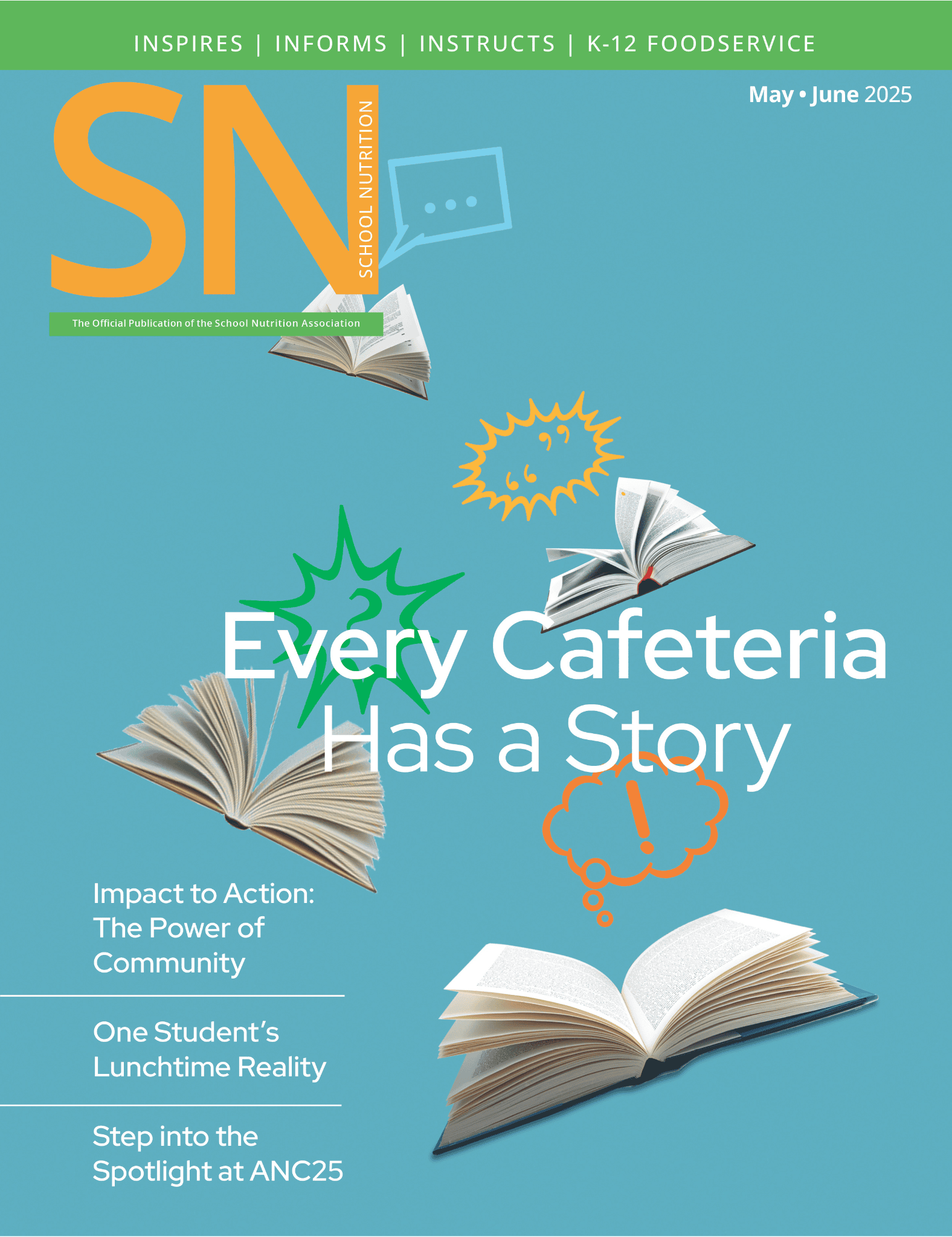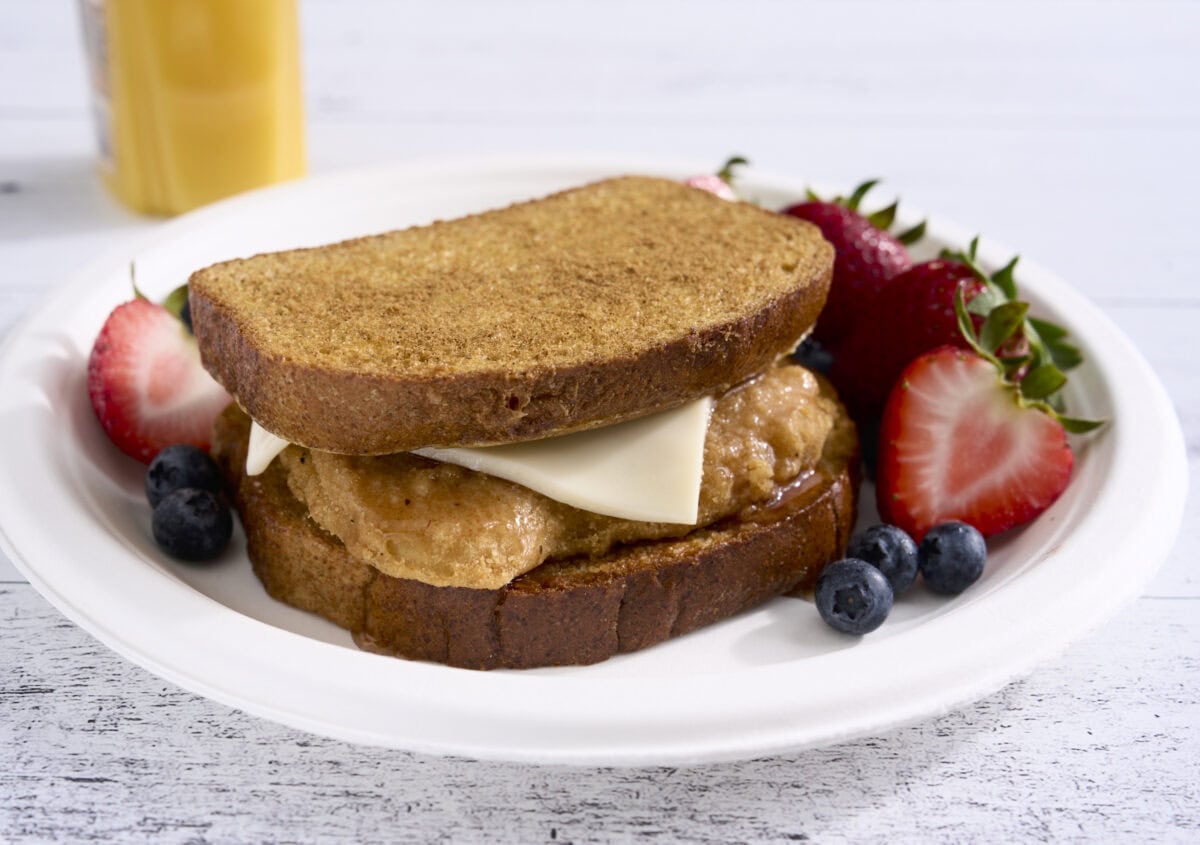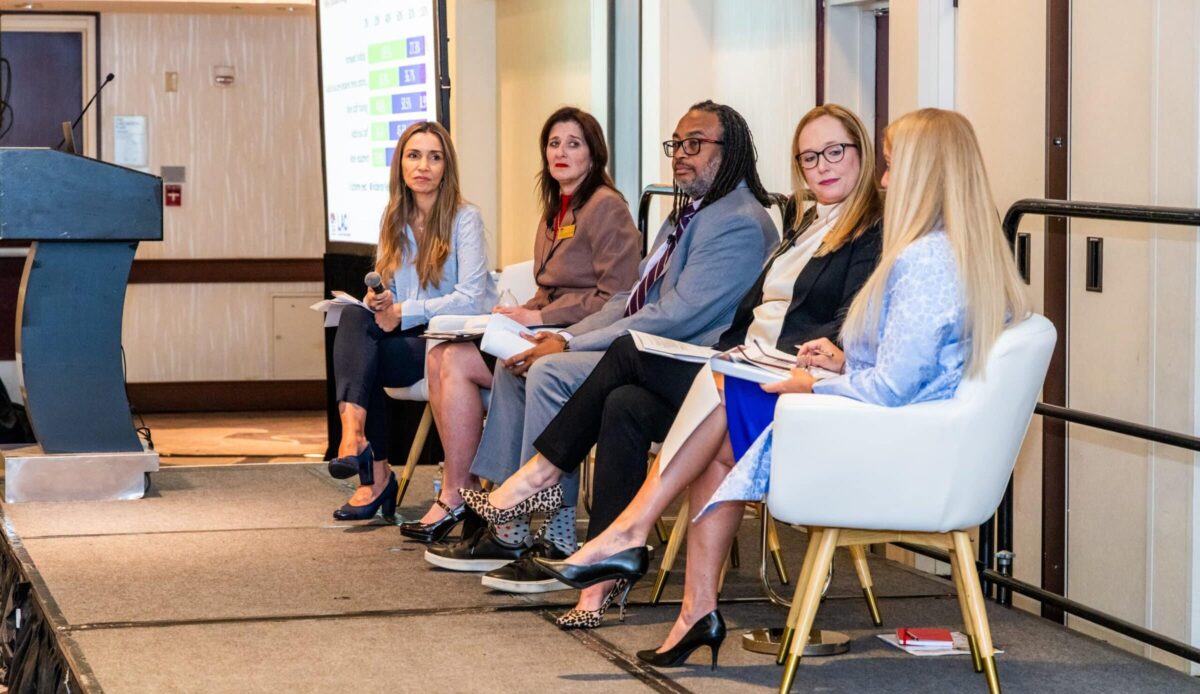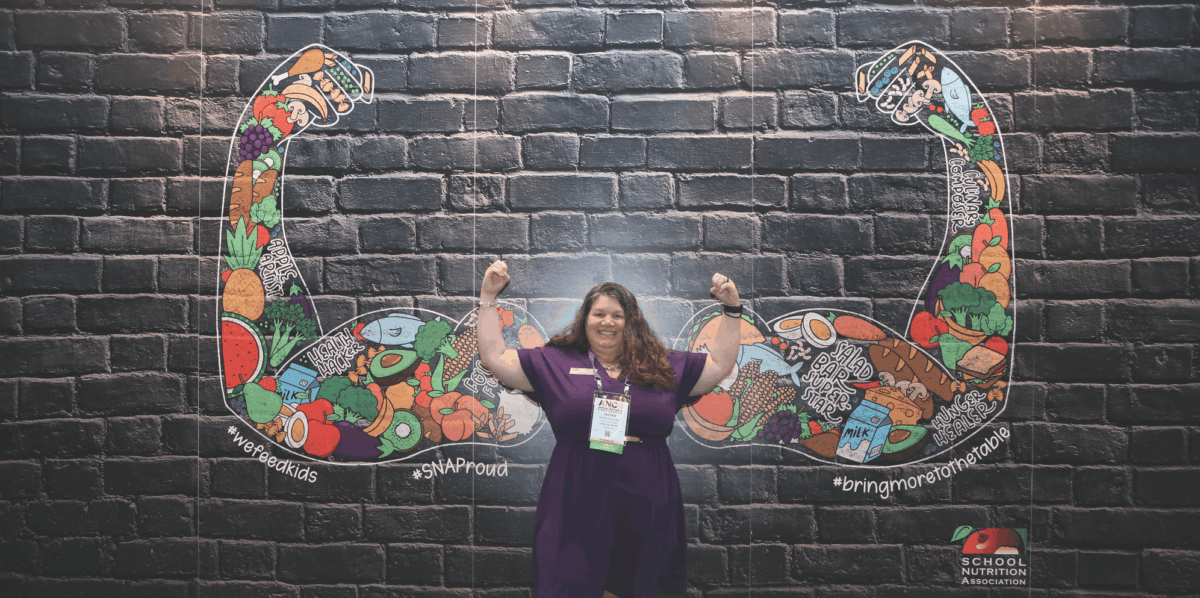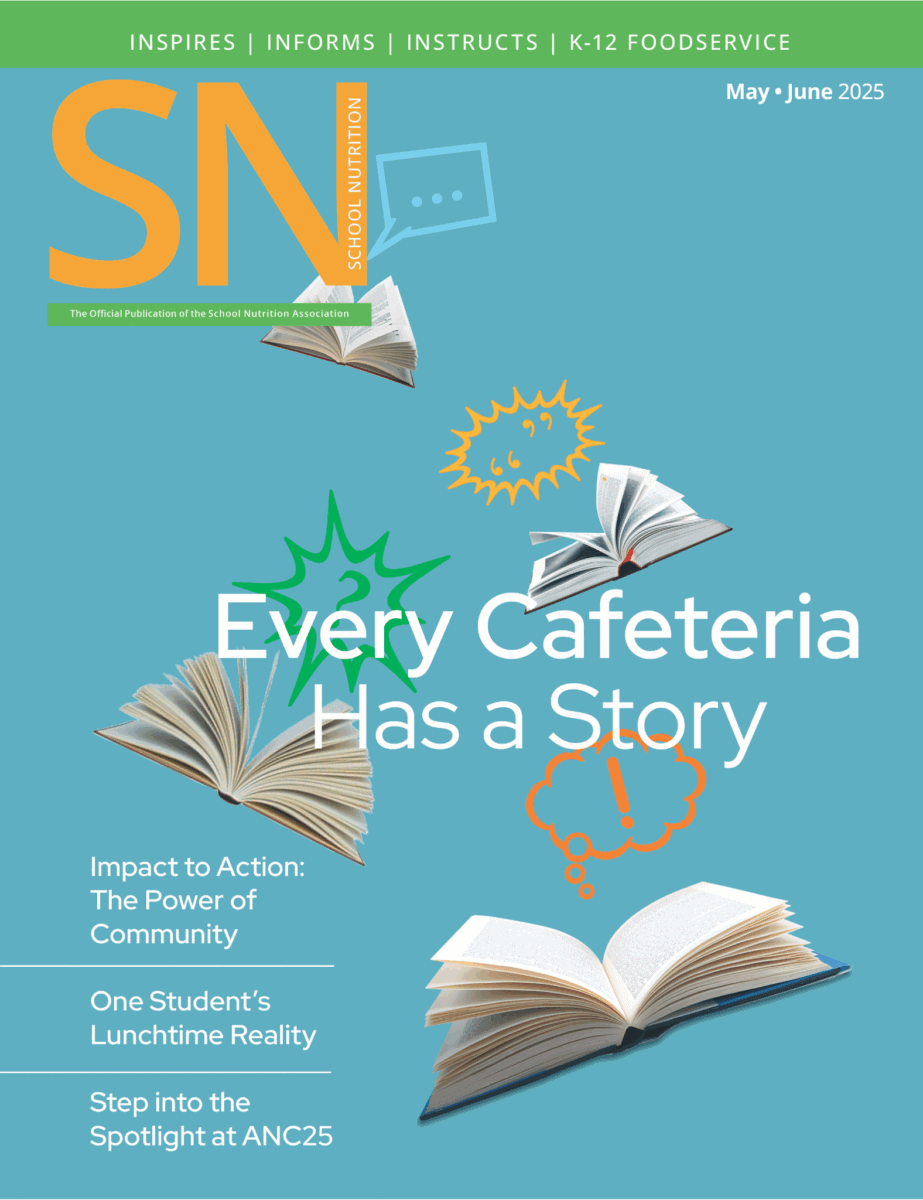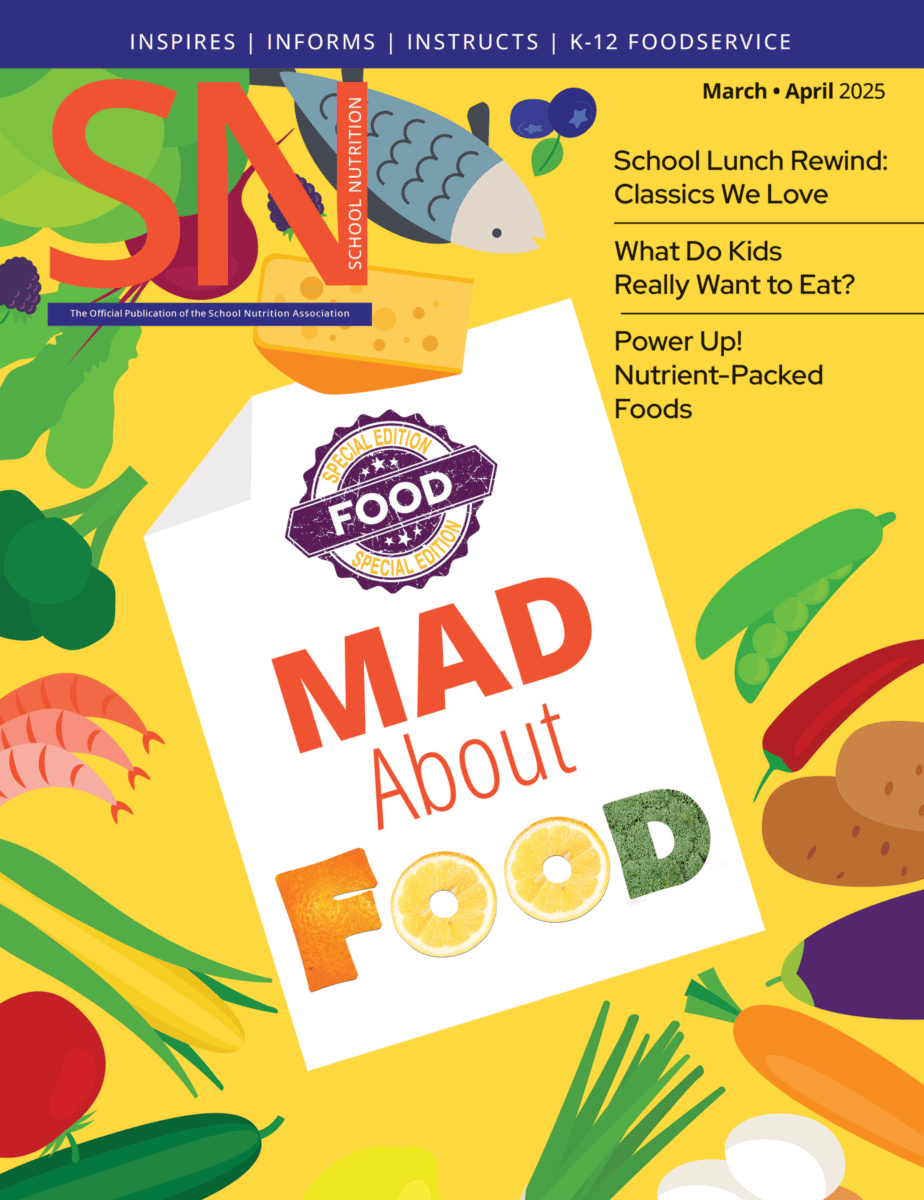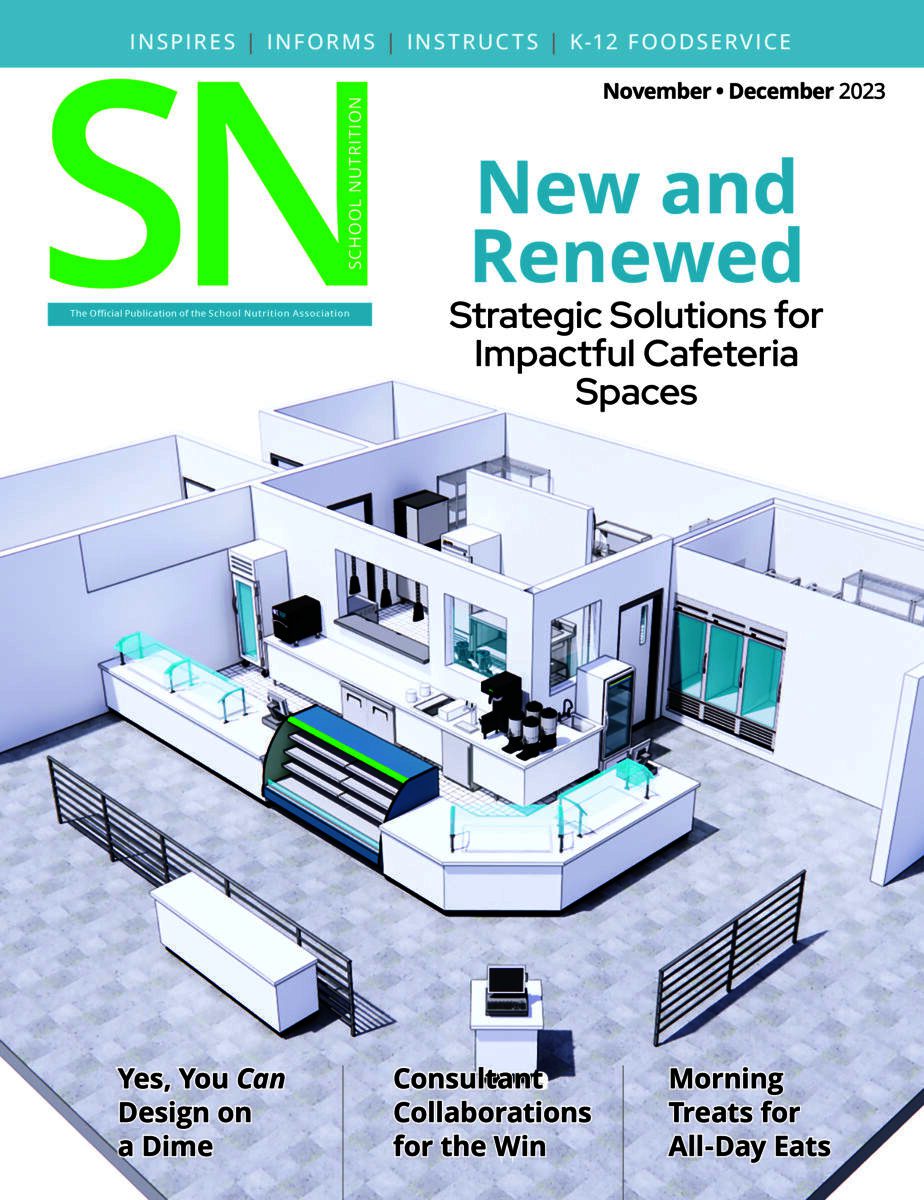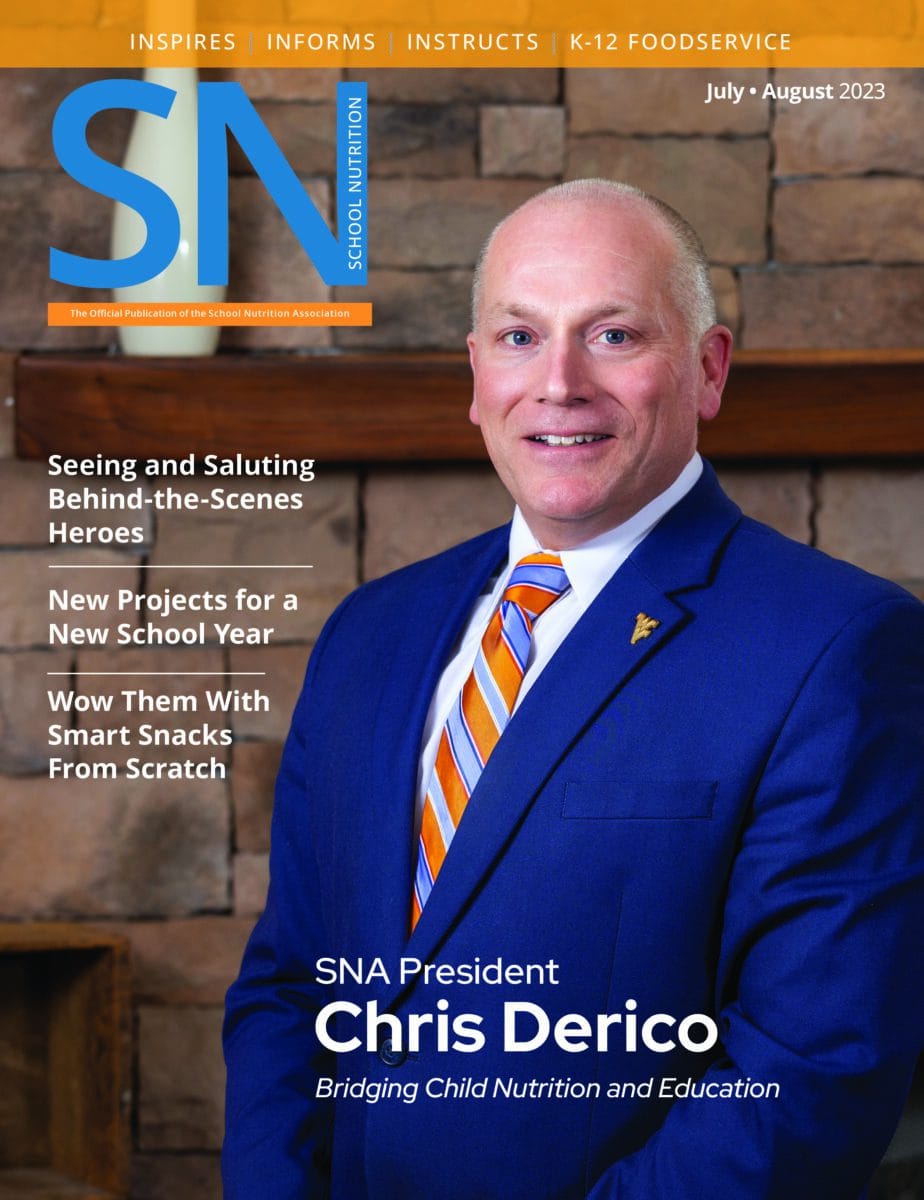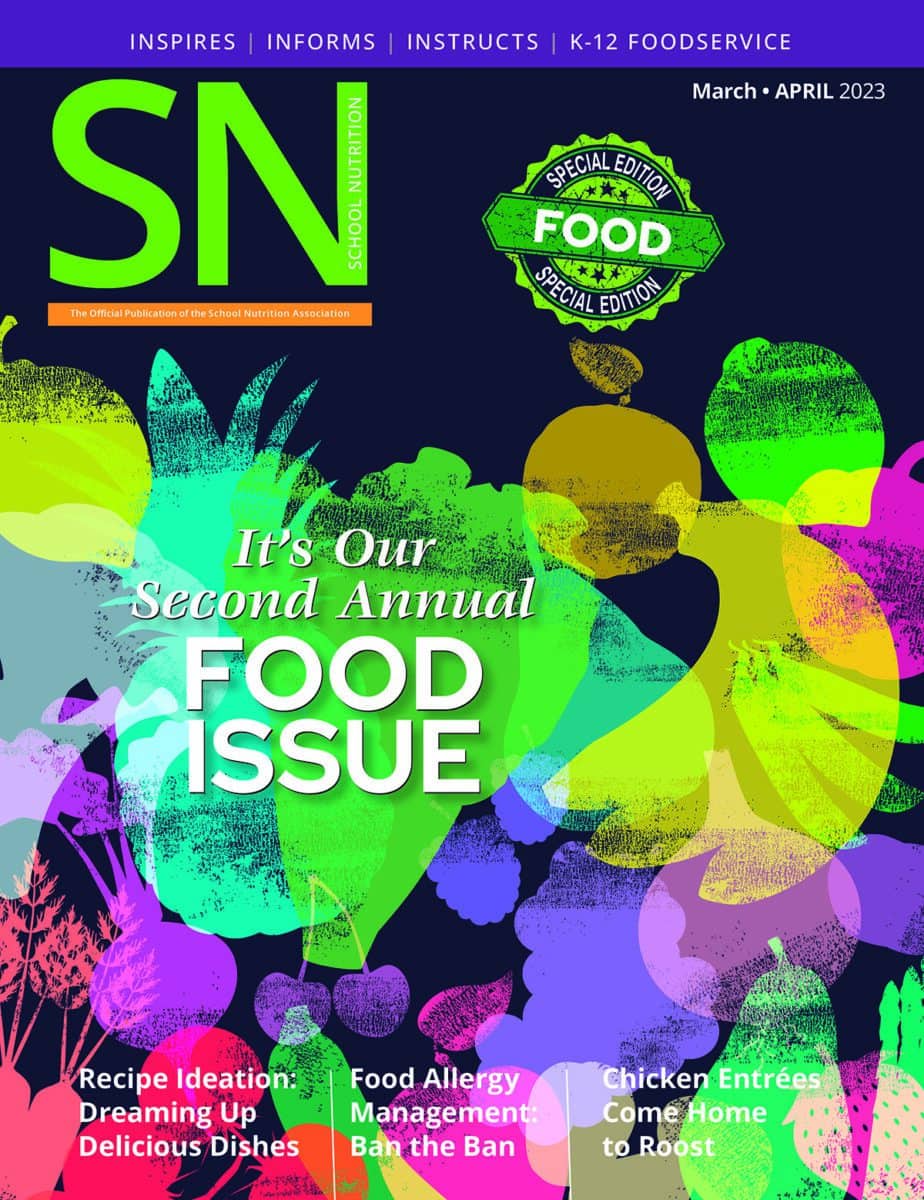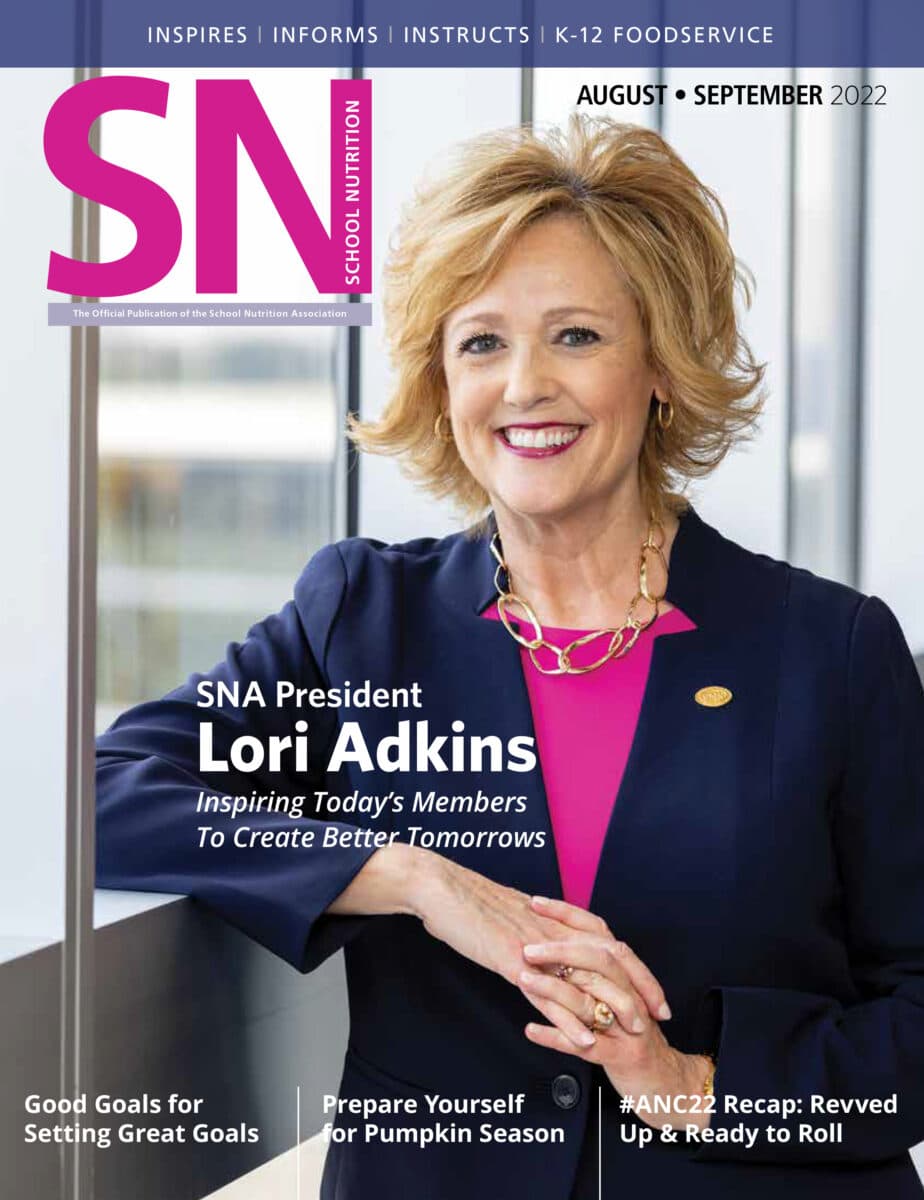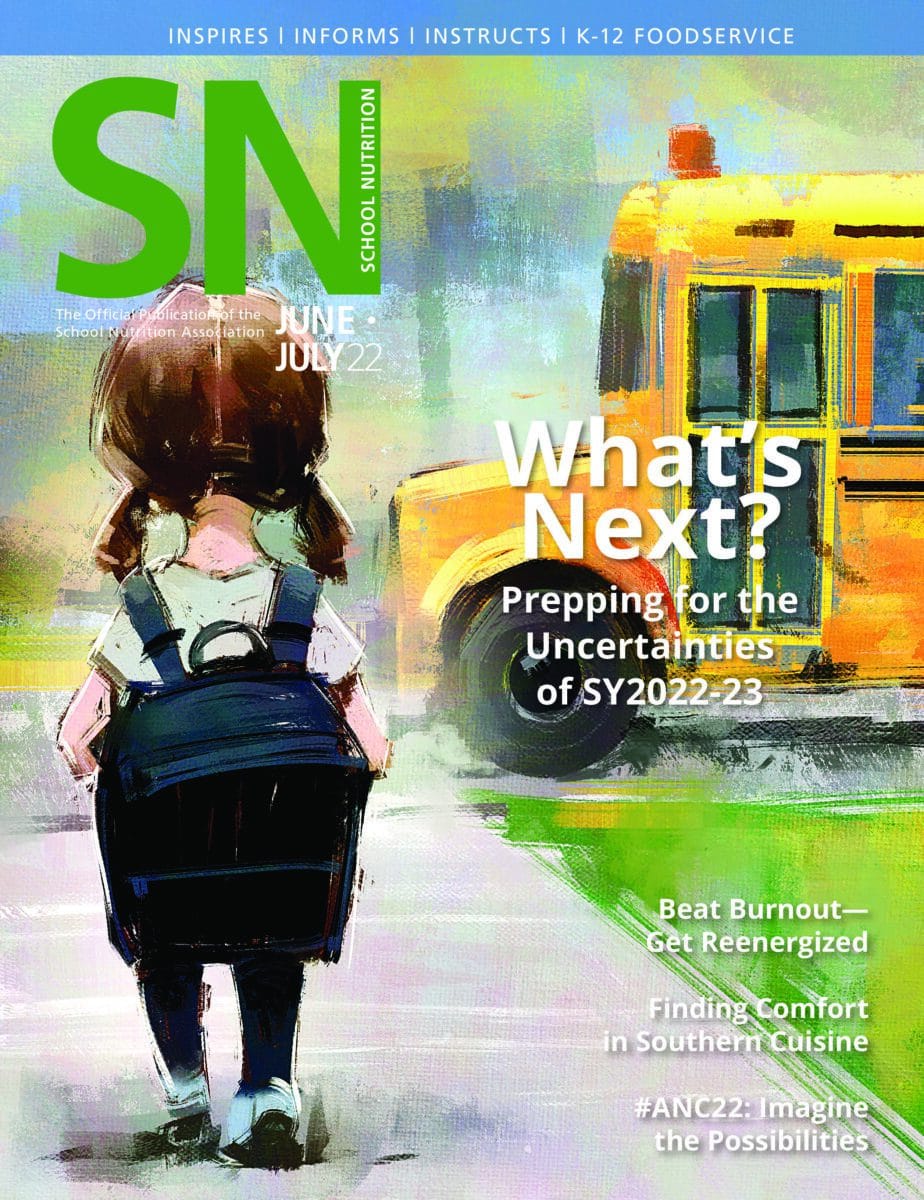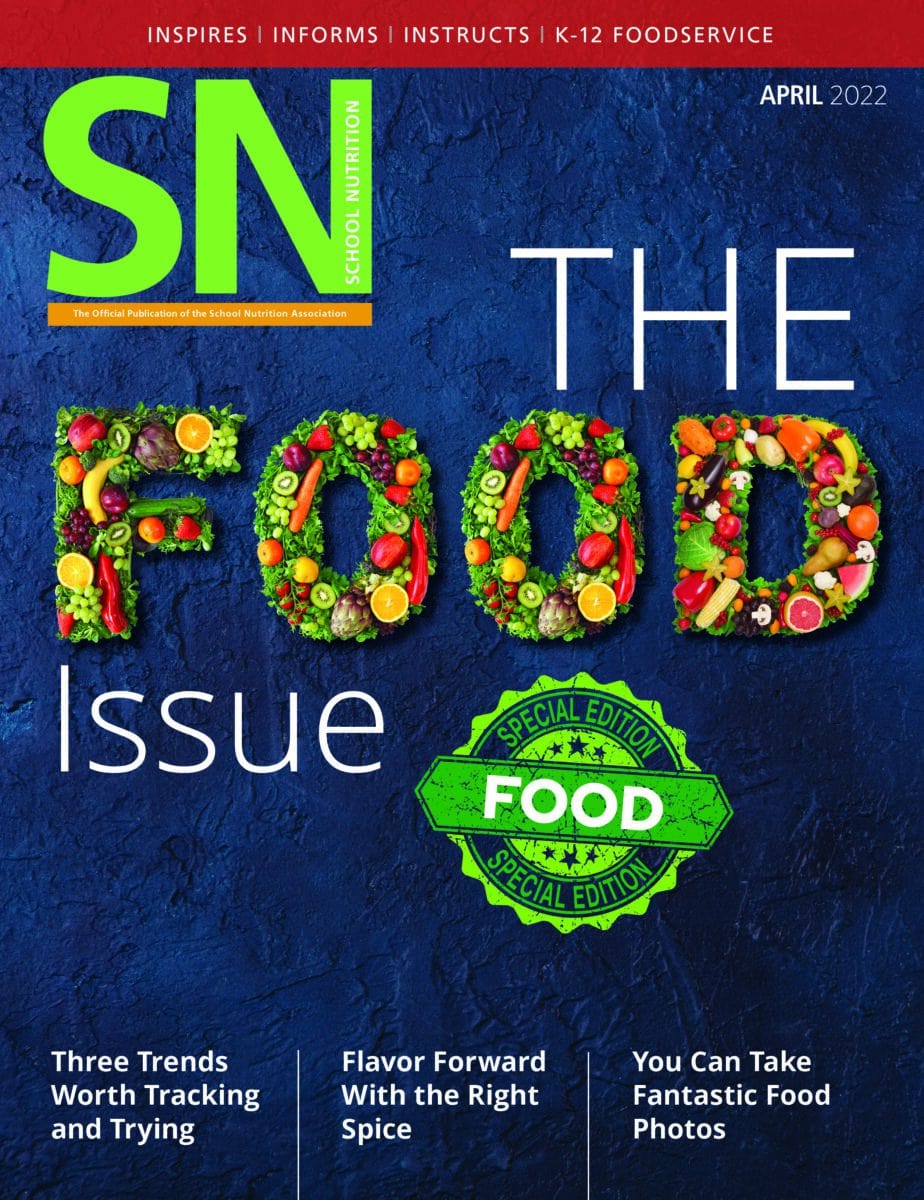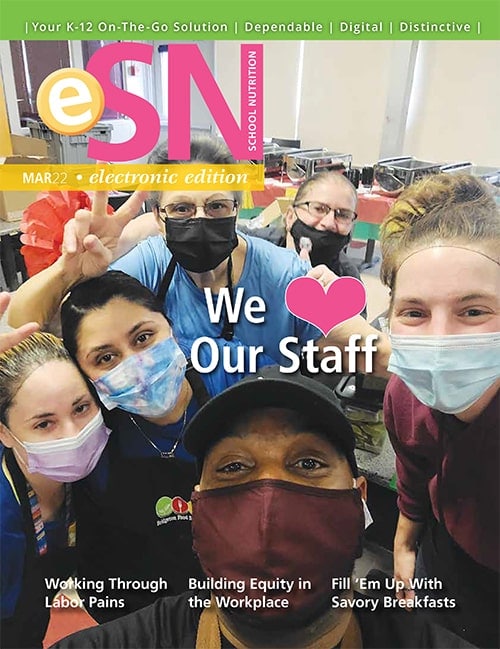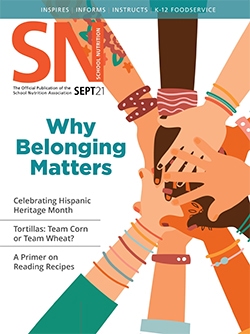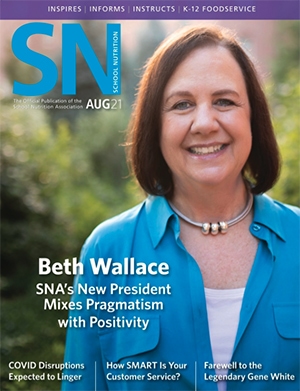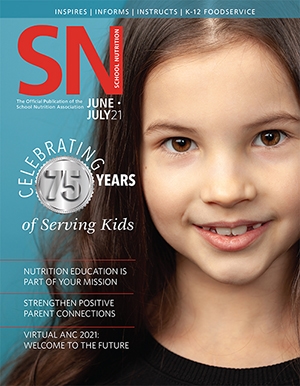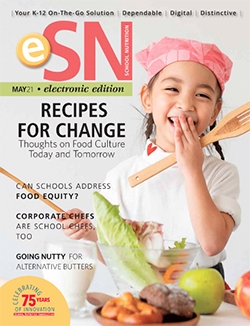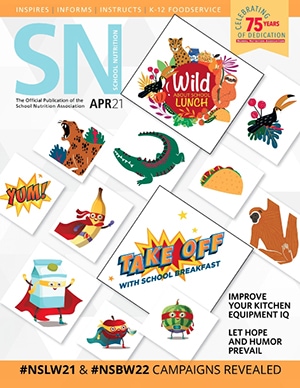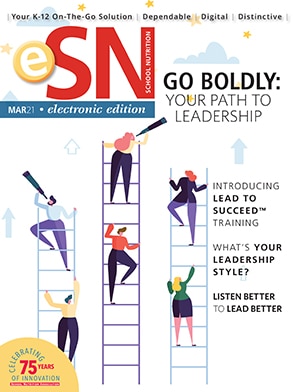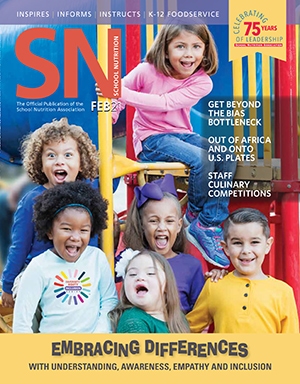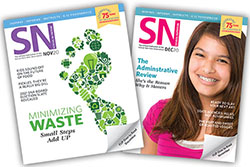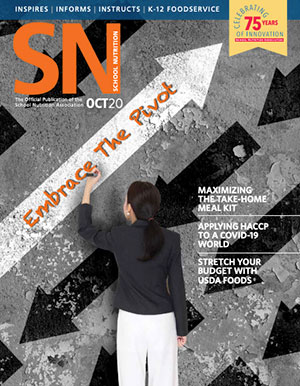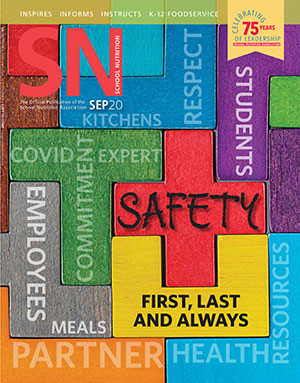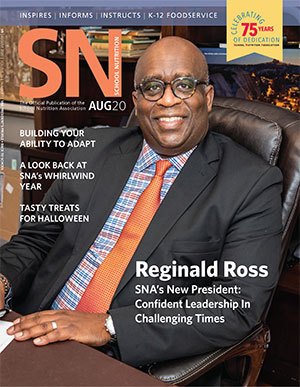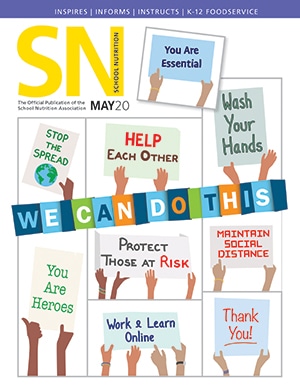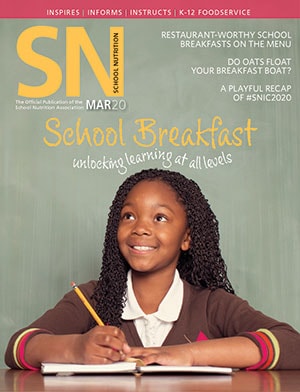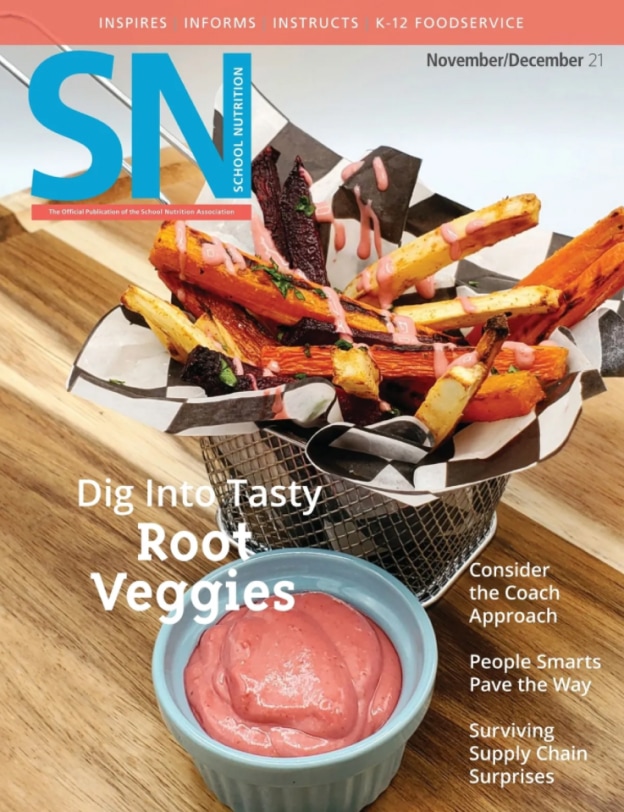Current Issue
Read the May/June 2025 Issue of School Nutrition Magazine
Whether it's sharing how you overcame the latest obstacles thrown your way or recounting the celebration you hosted in your cafeteria last week, storytelling has a way of inspiring us all.
That's why, in this issue of School Nutrition, we're exploring how every cafeteria has a story. From the story of resilience shared by Buncombe County Schools' nutrition team about their efforts in the aftermath of Hurricane Helene to the story of a high school student who successfully advocated for improved food allergy labeling in his cafeteria, you'll hear tales of creativity, strength and innovation that will leave you feeling inspired and proud to be a part of the school nutrition community.
Latest Articles
Featured Member
Meet Casey Kress, MBA, PMP, Child Nutrition Director, Tooele County (Utah) School District.

Previous Issues
subscribe to SN Magazine
Join the thousands of school nutrition professionals and supporters that read School Nutrition (SN) magazine—the official publication of the School Nutrition Association. SN magazine is available to all SNA members, but non-members don’t have to miss out on informative and inspirational cutting-edge solutions, how-to advice and best-practice models on dozens of topics. The magazine is published six times per year, and subscribers also have access to the robust online SN magazine hub and years worth of magazine articles.
Not a member of SNA? Discover the many additional benefits of joining. Not eligible for or interested in becoming a national member? Subscribe now!

Search or browse articles from the School Nutrition magazine archive.
Become an Advertiser
Gain the Competitive Edge with School Nutrition Magazine
As the premier publication for the school nutrition profession, School Nutrition magazine is SNA members’ go-to resource for information, inspiration and innovative ideas on important issues, both in and out of the cafeteria. By advertising, you’ll not only promote your products and services to this important market segment via a reputable national magazine, you’ll also be part of the movement to provide healthy meals to America’s students.


